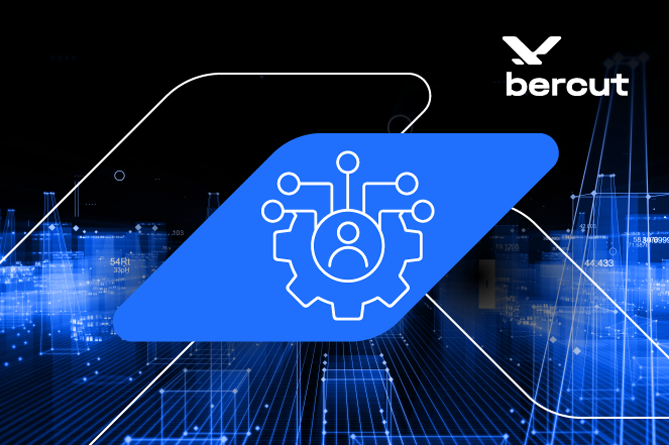
Customer-Centric Approach, or User Insight at the Heart of Operator’s IT Systems
Trends such as increased number of digital channels for subscribers’ communication, the expansion of AR capacity, the spread of voice assistants, chatbots and online gaming are shaping new conditions for the development of the telecom market. Seeing the telecom operator as a single point of entry into the digital environment, consumers expect its services and products to meet their most diverse needs and the quality of the customer experience to constantly grow. Hence, operators’ former service-based business models with a focus on product portfolio are working less effectively. Success in improving the customer experience defines the operator’s competitiveness.

Customer-centric approach
In an effort to cover the maximum customer needs and increase the value of the product offering, telecom operators are transforming into digital companies and ecosystems and introducing innovative technologies. These changes are aimed at implementing the customer-centric approach currently relevant in the market. It is based on customer behavior study and analysis of their conscious and unconscious needs and insights. The results form the basis for a new digital product, service or service idea.
The dynamically changing insights of end consumers prompt telecom companies to rapidly test product hypotheses and create fundamentally new digital services in the shortest possible time. The operators even hire whole IT divisions for the tasks of analyzing Big Data, developing MVPs and launching new in-demand digital products with short time-to-market.
New generation of billing systems
Forward-thinking operators who support the customer-centric approach value time, so they prefer to develop digital products independently and cannot afford waiting for upgrades to their existing systems. Downtime will inevitably lead to the loss of a business opportunity window. For this reason, telecom players are looking for advanced IT systems and in-house development tools that will upgrade their IT landscape.
Strategic approaches are shifting in the market, while innovative technologies are developing organically. As a result, companies have to master new data formats and content types. To meet these challenges, the operators need to have a convergent billing system that is universal across all types of communications in demand and charging models. In the future, we can anticipate a sharp technological leap due to the increase in data transfer speeds with the widespread launch of 5G and Network slicing technologies. The consumers will have different expectations of the user experience, and the operator must be ready to meet them. However, at the moment, analysts only assume how to monetize these services in the B2C market. Therefore, the system’s features should be flexible and adaptable to different scenarios of operator’s development in this area. The availability of open customization points is an important advantage of a billing system.
Implementation of a customer-centric strategy is time and resource consuming, because a mobile operator needs to have a developed IT infrastructure and a broad range of competencies in high-tech product development. Originally, this issue was helped by vendors, followed by collaborations and partnerships. Companies achieved operational efficiency and financial cost optimization by sharing experience and competencies between multiple project members. Today, the market is focused on managing consumer insights, where demand for new unique digital products and services is rapidly increasing. So, the partnership becomes an ecosystem in which the telecom operator acts as a coordinator and manages a whole set of products of third-party partners. All these products are created collectively, using the infrastructure and resources of the operator. As a result, the importance of the billing system in this process increases significantly. This makes the billing system the center of account management, service, and control of all existing services in a single point, combining all possible products of the operator and its partners under a single tariff offer. This means that the charging capacity of the system should not limit the development of new multi-format digital products. After all, their diversity is what makes the operator’s offer attractive to the subscribers, builds loyalty and a positive customer experience.
The charging features of the billing system should not cause a limitation for the operator.
For instance, Russian developer Bercut, a technology partner to companies on their way to digital transformation for over 28 years, offers a convergent billing system for business monetization and development of digital ecosystems ⎯ IN@Voice.
With IN@Voice operators can offer universal charging (including new generation 5G networks), use loyalty programs and efficiently manage settlements with subscribers and partners. Thanks to IN@Voice, subscribers can choose unique offers based on their own needs ⎯ all in a single tariff plan.
Future of development
As was mentioned earlier, a customer-centric strategy requires a fast launch of new target products in the market. Before, to ensure a fast release of new digital products, companies inevitably had to maintain a large staff of skilled in-house developers. Today, the IT market offers telecom companies modern development tools, i.e. platform solutions that allow one to develop MVPs in-house, test product hypotheses and launch digital products with short time-to-market. And all this without engaging a team of high-tech professionals. An example of such a tool is Bercut Hybrid Integration Platform (HIP Bercut).
HIP Bercut is an array of pre-built tools for creating complex high-loaded digital products and testing product hypotheses using a variety of development approaches: no-code, low-code, and pro-code.
The use of a simple web or drag-and-drop interface (no-code or low-code) minimizes the need for high-level IT professionals for tasks that can be handled by junior or middle staff (analysts, product managers or marketers). IT professionals can focus on complex innovation projects, while product marketing staff can generate and test unlimited new ideas with the help of ready-to-use business processes and microservices on the platform. HIP Bercut stores all developments and allows to reuse them in future projects, which contributes to the continuous development and building of IT competencies in the company.
Source of innovation
The emergence of new technologies and insights prompts the telecom market to constantly seek new ideas and opportunities for their implementation. For this purpose, operators try different formats, such as in-house incubators and R&D centers, and partner with small IT startups. Startups respond promptly to market changes, produce unconventional, innovative solutions, helping telecommunication companies to significantly reduce costs for innovation development. At the same time, small teams with less impressive resources get to successfully implement their own ideas using the operator’s infrastructure. This is a win-win for each party. Moreover, competitions among developers help unlock the potential for creating absolutely unique solutions and give young talents a chance to start their careers.
Platform solutions like HIP Bercut promote beneficial cooperation between big digital companies and small startups. They allow young teams to quickly and easily create MVP in a secure operator environment, test it on a part of the subscriber base, and prove its effectiveness based on objective data and demand analytics. This way, the company is able to produce more valuable digital products with a guaranteed return on investment, streamline the time and money costs of their development, and also fulfill an important social mission by helping gifted young professionals and their bold ideas succeed.
Social mission. Afterword.
When it comes to digitization of companies and customer-centric strategies, one cannot avoid mentioning the underlying social mission that every major company focuses on in its activities. Comfort and security nowadays largely depend on digital technologies, which improve the quality of life, enhance the comfortable environment and, as in the case of platform IT products, reveal new talents.
Digitization promotes high quality of service, comprehensive information, easy generation of various applications, informing subscribers of their status, sparing them of the need to visit offices, and much more. In fact, operators of digital services daily solve the one socially important question: “What product or service can improve the quality of people’s lives and benefit society?” Moreover, every telecom company has an important mission at the heart of the corporate ideology.
A digitization IT partner to any telecommunication business is responsible for providing the operator with all the required tools and full support — a professional team, accumulated experience and expertise. It is important to enhance the operator’s own capacities and eliminate the vendor lock.

